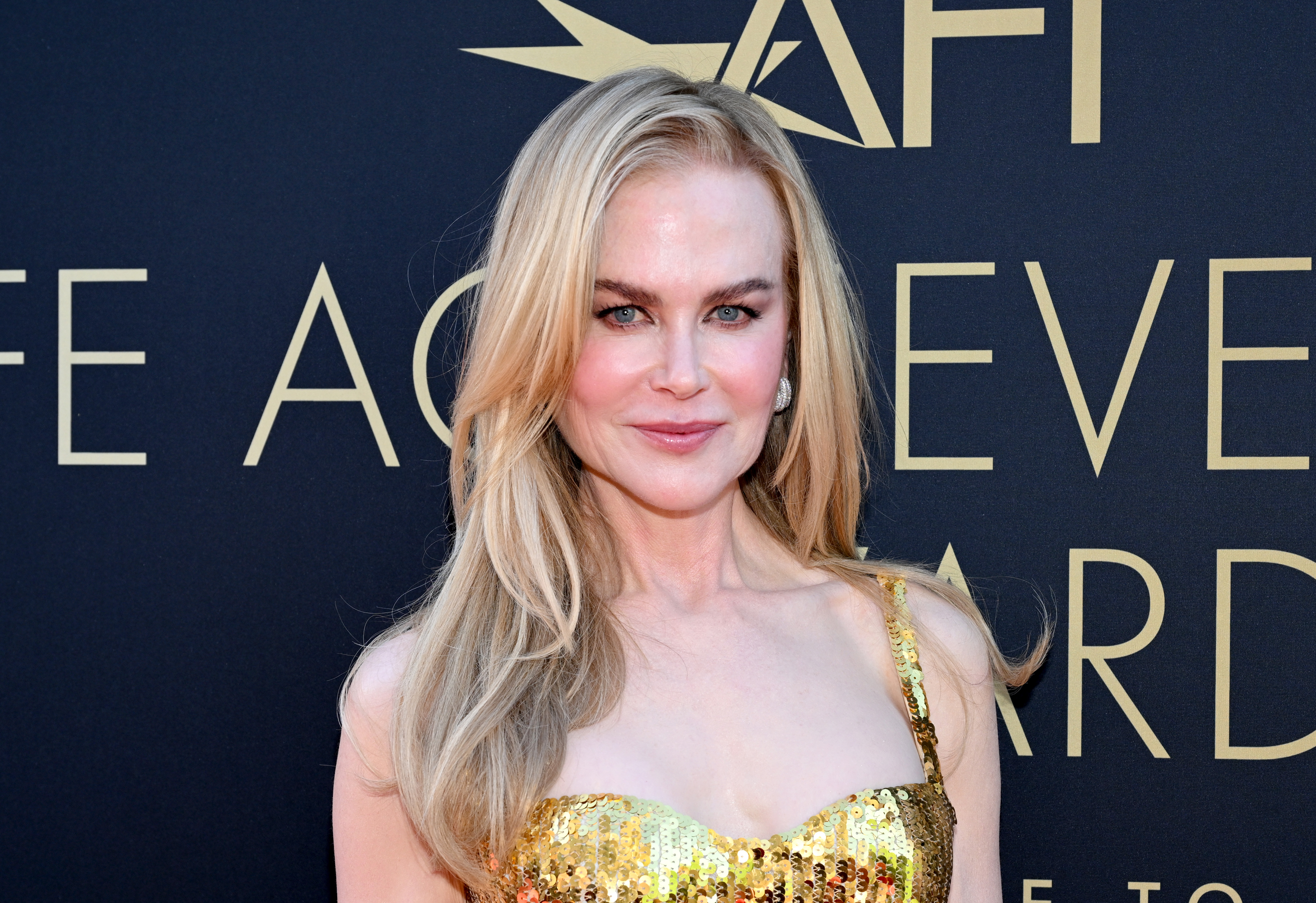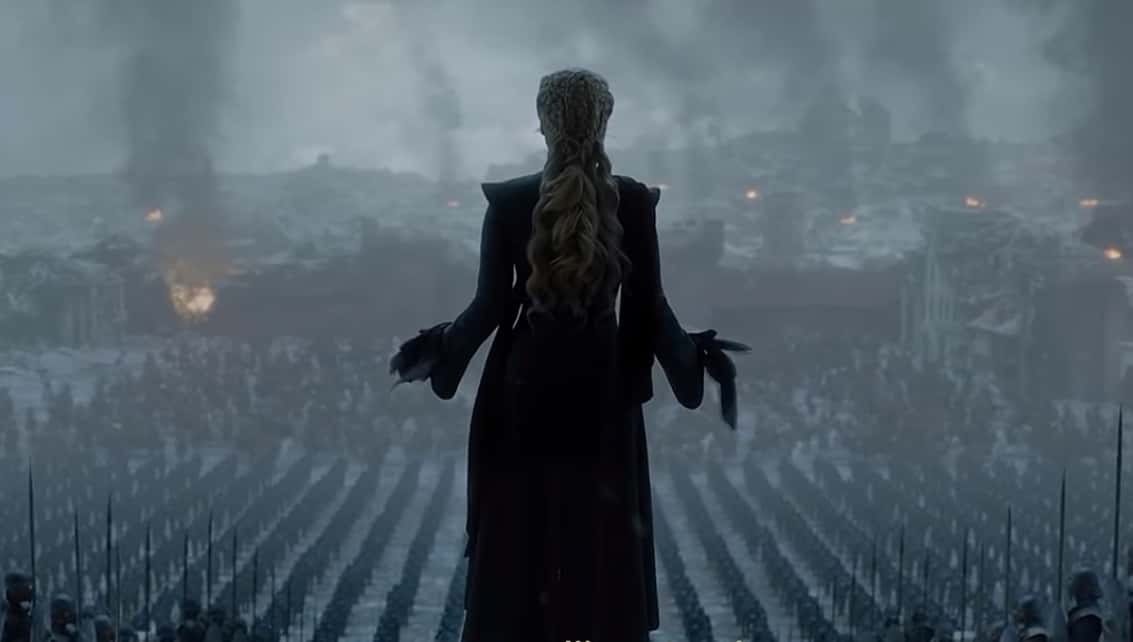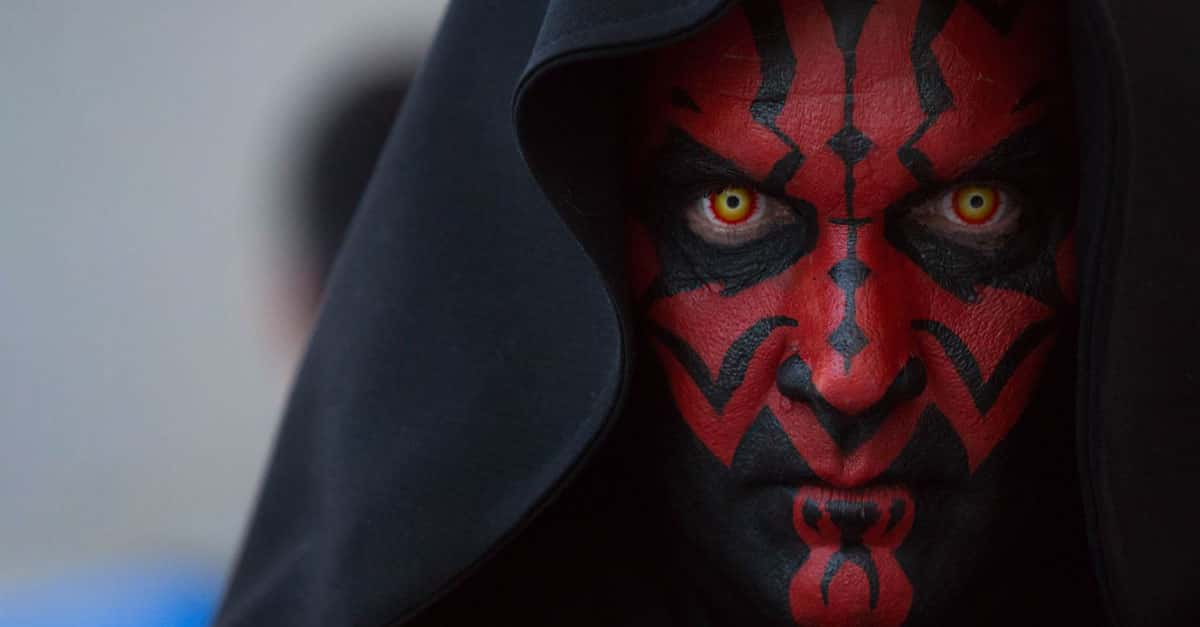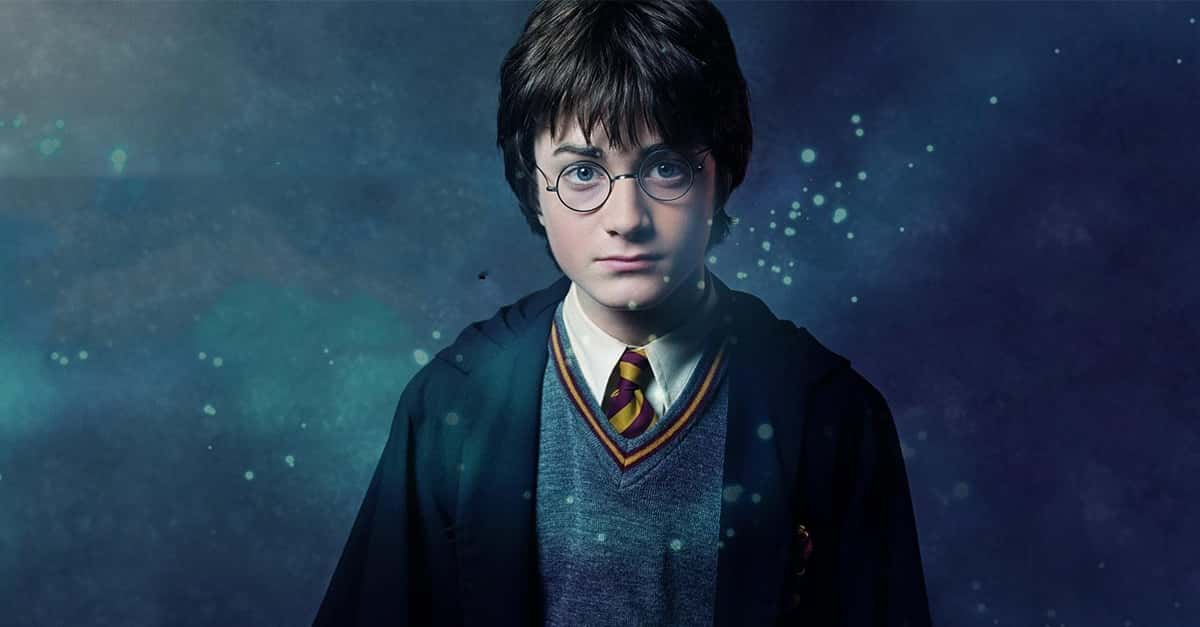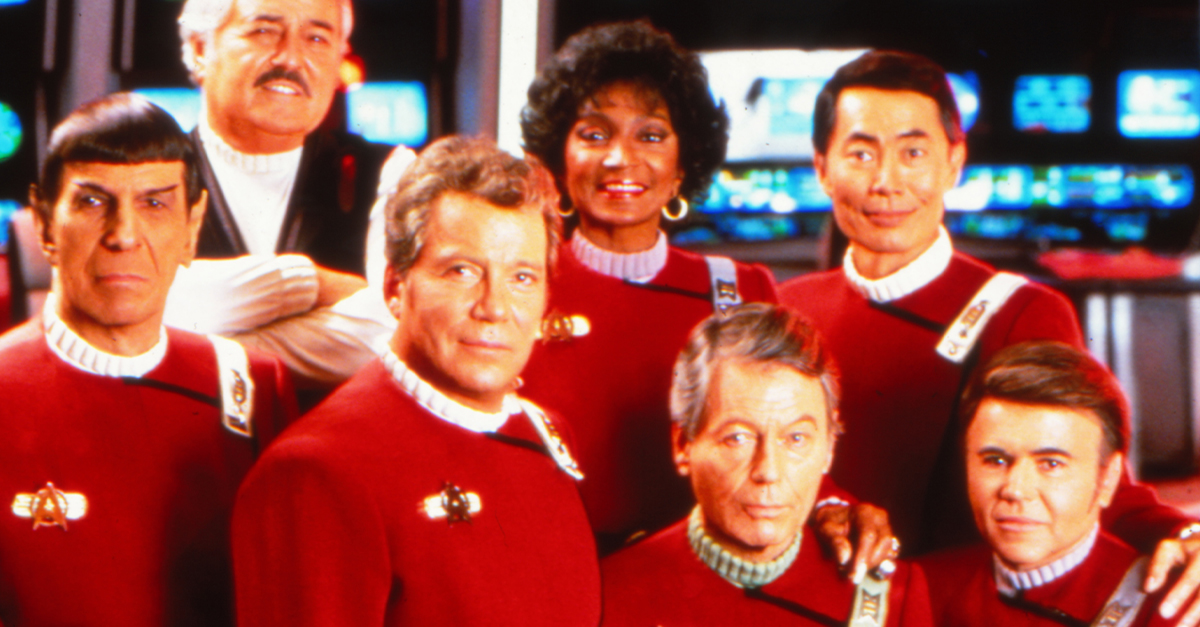It’s A Classic For A Reason
M*A*S*H first aired on September 17, 1972. Its last episode aired 11 years later, in February 1983. Despite being off the air for over four decades, M*A*S*H continues to be popular with fans young and old. Here are some facts that even the most veteran fans likely didn’t know.
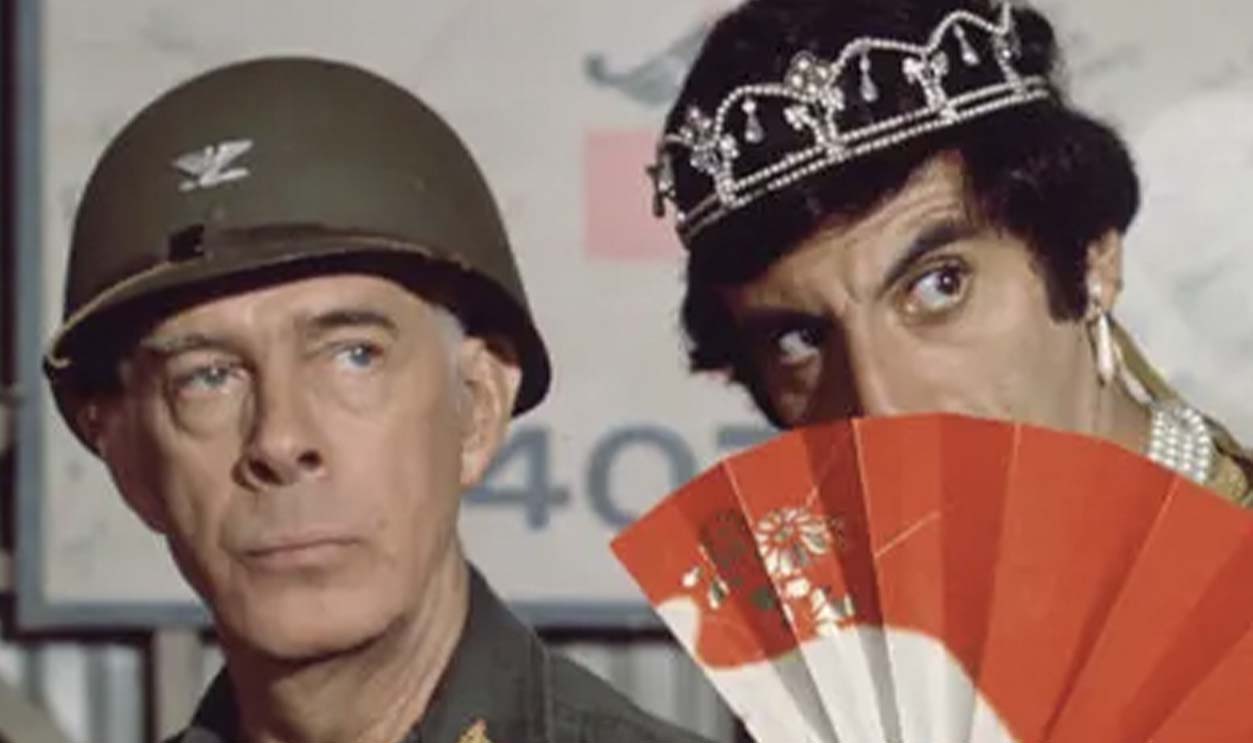
The Actors Knew What They Were Doing
Believe it or not, it’s true! Alan Alda, Jamie Farr, Wayne Rogers, and Mike Farrell all served at some point before appearing on M*A*S*H. Their own experiences surely played into their roles throughout the show.
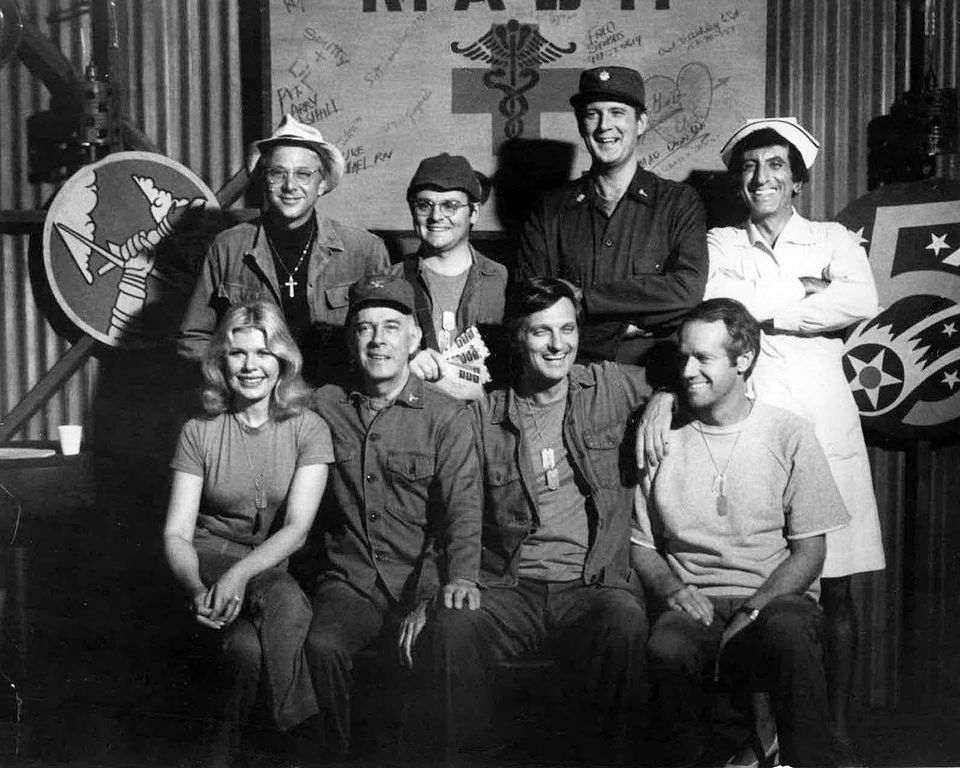 CBS Television, Wikimedia Commons
CBS Television, Wikimedia Commons
The Actors Knew What They Were Doing
Alda was part of the Army Reserve in Korea. Farr was stationed in Japan when his service was requested during a USO Tour through Korea. Rogers spent some time as a ship navigator with the Navy, and Farrell spent time with the US Marine Corps.
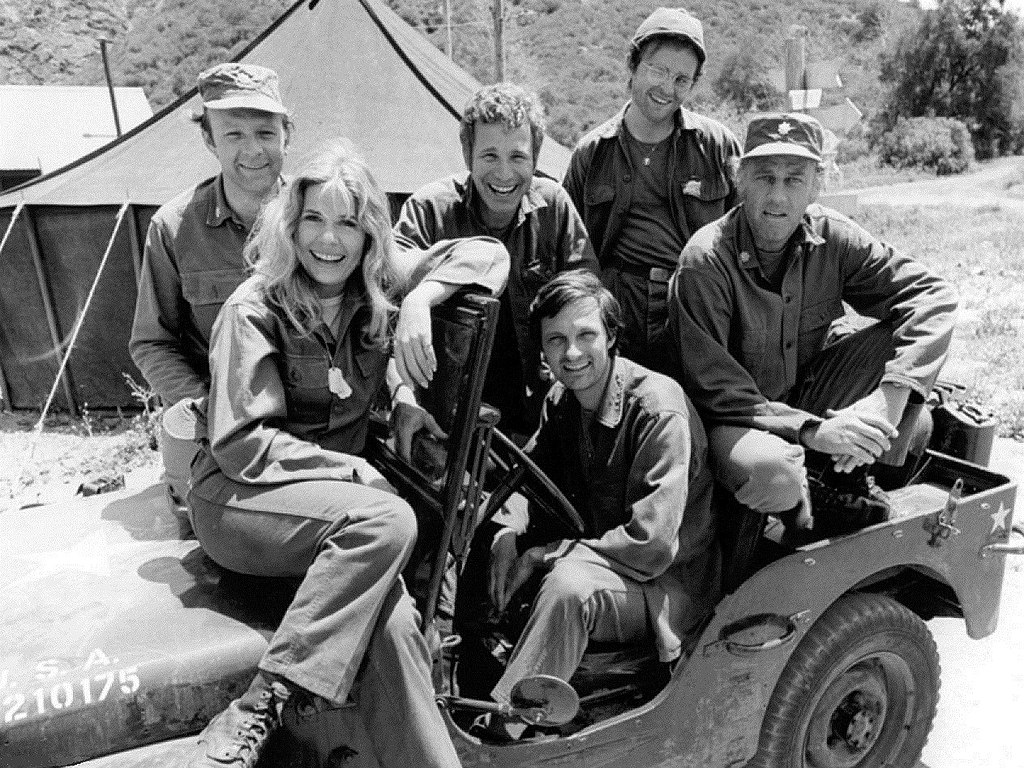 CBS Television, Wikimedia Commons
CBS Television, Wikimedia Commons
What Does MASH Stand For?
Okay, if you are a true fan of the show, then you should already know this fact. However, just in case you’ve forgotten, we’ll give it to you again. “MASH” stands for Mobile Army Surgical Hospital. It was used in Korea and was, of course, the setting for M*A*S*H.
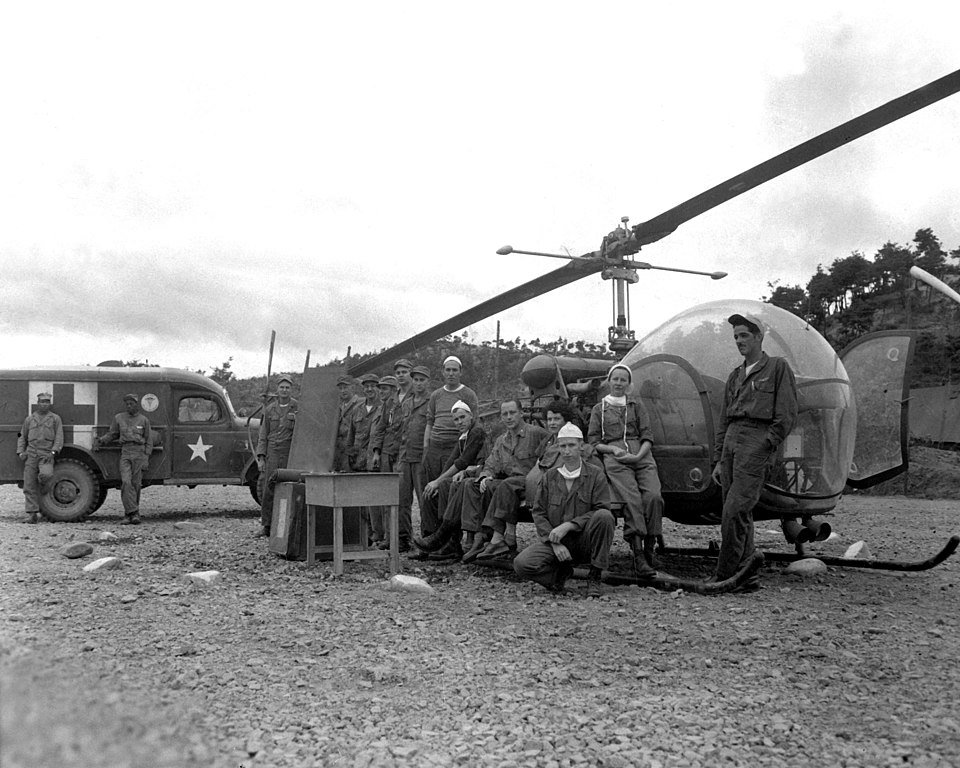 U.S. Signal Corps, Wikimedia Commons
U.S. Signal Corps, Wikimedia Commons
The Cast Was Almost Much Different
Mclean Stevenson, who went on to play Lt Colonel Henry Blake, did not initially audition for that role. He came out for Hawkeye, which went to Alda. But there’s more!
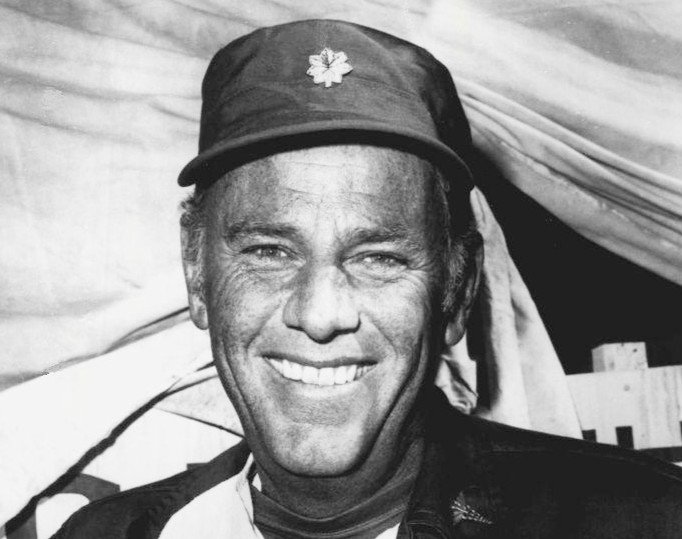 CBS Television, Wikimedia Commons
CBS Television, Wikimedia Commons
The Cast Was Almost Much Different
Wayne Rogers made his mark as Trapper John. However, the role was not intended for him. Robert Klien, a comedian, was offered the role first but turned it down. He certainly lived to regret that decision.
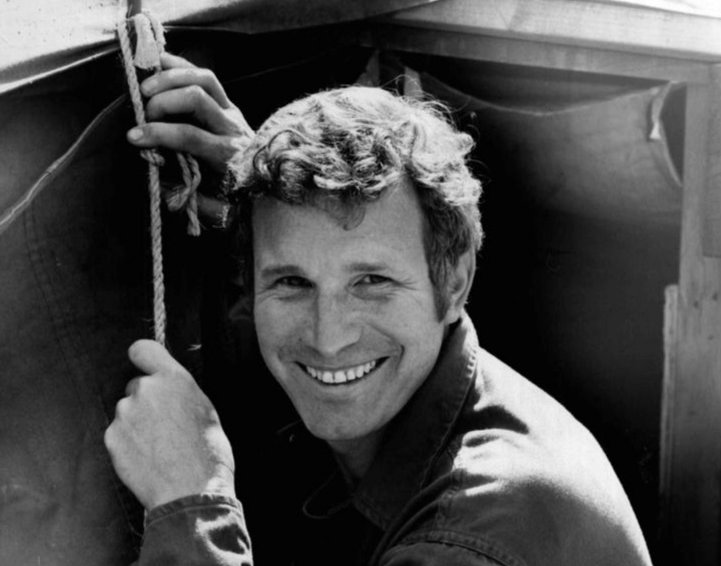 CBS Television, Wikimedia Commons
CBS Television, Wikimedia Commons
The Movie Came First
Before M*A*S*H aired on television in 1972, the same characters graced the big screen first. The film, directed by Robert Altman, was released in 1970. It was met with such great success that the world wanted more.
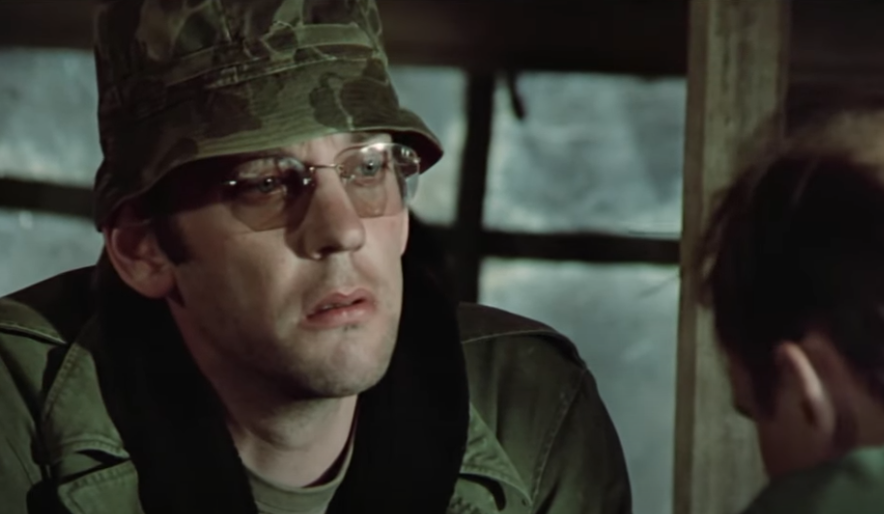 Aspen Productions, M*A*S*H (1970)
Aspen Productions, M*A*S*H (1970)
The Movie Came First
Both the film and television show are based on the same novel: MASH: A Novel About Three Army Doctors. An attempt to turn the book’s sequel into a film never took off the ground. The idea of a television spin-off, however, did.
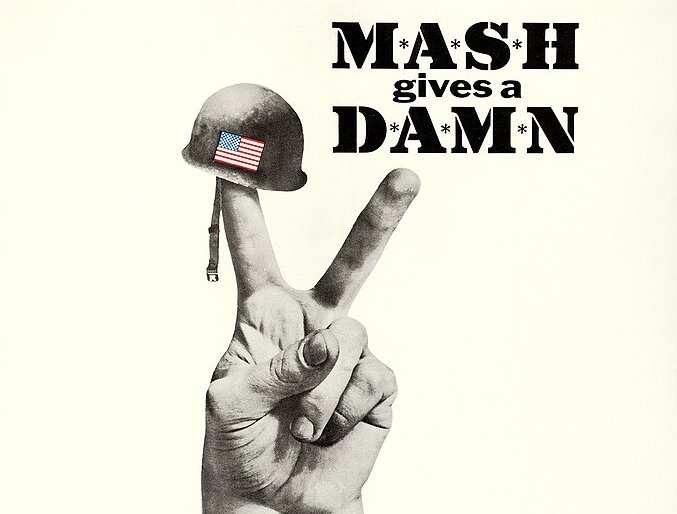 20th Century Fox., Wikimedia Commons
20th Century Fox., Wikimedia Commons
Film VS Television
Although M*A*S*H is often marketed as a spin-off of the film, and it does primarily feature the same characters, there are some key differences. The biggest difference, of course, is the cast. Nearly every character was replaced.
 Twentieth Century, M*A*S*H (1972-1983)
Twentieth Century, M*A*S*H (1972-1983)
Film VS Television
The late Donald Southerland starred in M*A*S*H (1970) as Hawkeye Pierce, and Elliot Gould played his counterpart, Trapper John. While almost all actors were replaced between the film and the show, there was one character that remained the same.
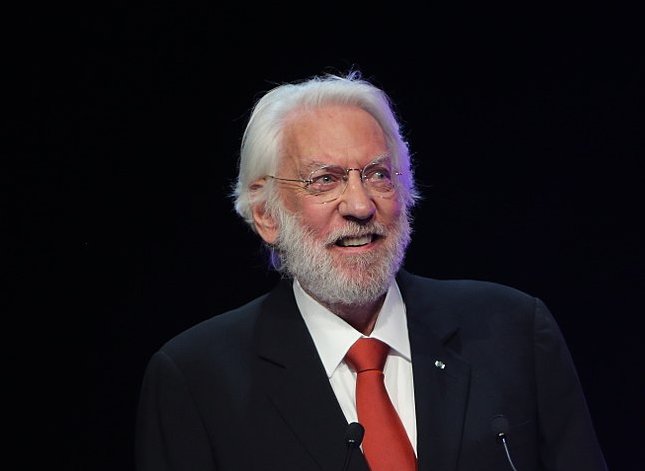 Festival TV Monte-Carlo, CC BY-SA 3.0, Wikimedia Commons
Festival TV Monte-Carlo, CC BY-SA 3.0, Wikimedia Commons
Radar O’Reilly
M*A*S*H may have recast most of their major characters. However, one actor remained in his role. Gary Burghoff played Radar O’Reilly in both the film and the television show. This made him the one constant between the two works.
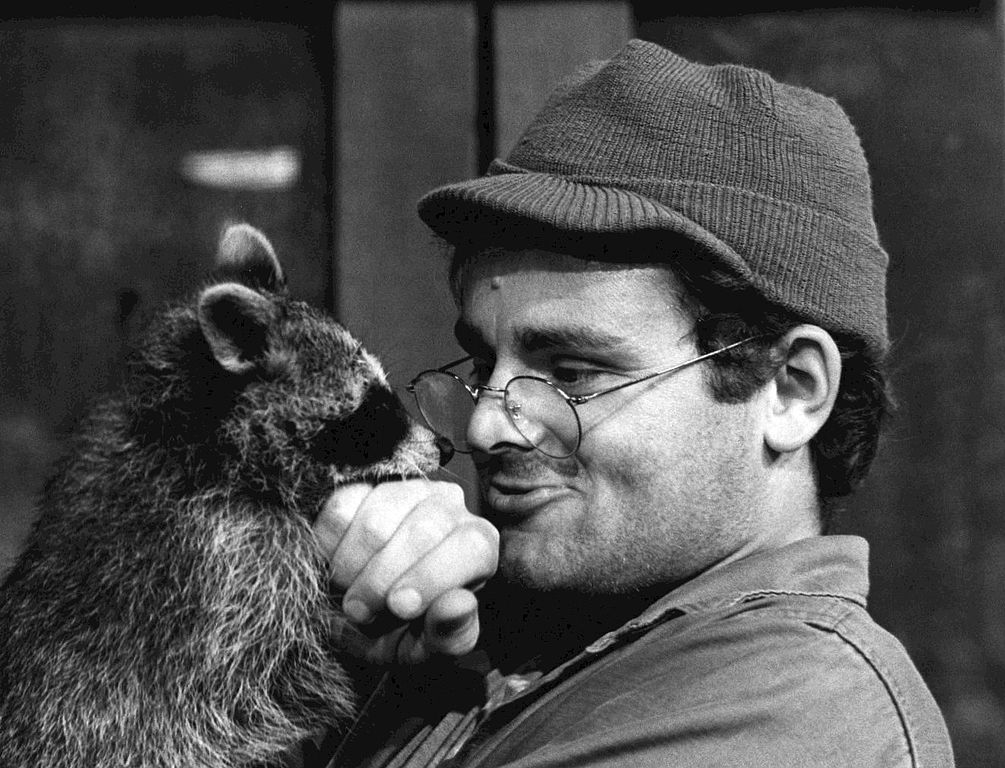 CBS Television, Wikimedia Commons
CBS Television, Wikimedia Commons
The Pilot Was Written In Record Time
You would think that it would take months, if not years, to properly write a pilot for a show as successful as M*A*S*H. You’d be wrong. Larry Gelbart, a screenwriting ace who’d been living in London, wrote the pilot in just two days.
 CBS Television, Wikimedia Commons
CBS Television, Wikimedia Commons
It Almost Didn’t Make It
Maybe it was because it was thrown together so quickly. However, M*A*S*H struggled to find an audience early on. Its first season was ranked 46. There was a lot of doubt about whether this fledgling show would be allowed to fly.
 CBS Television, Wikimedia Commons
CBS Television, Wikimedia Commons
The Network Saved It
Despite its poor ratings, and the doubts that people had about its ability to survive, CBS decided to take a chance and renew it for its second season. However, they made a key change that made all of the difference.
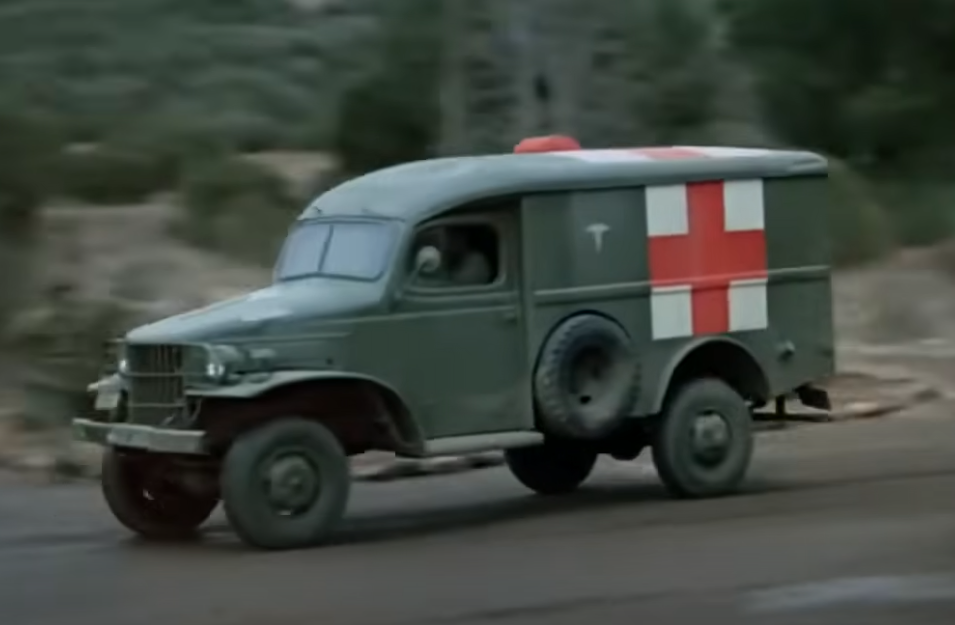 Twentieth Century, M*A*S*H (1972-1983)
Twentieth Century, M*A*S*H (1972-1983)
The Saturday Line Up
CBS moved M*A*S*H to their Saturday night lineup, sandwiching it between All In The Family and The Marry Tyler Moore Show. It was just what the show needed to boost its ratings.
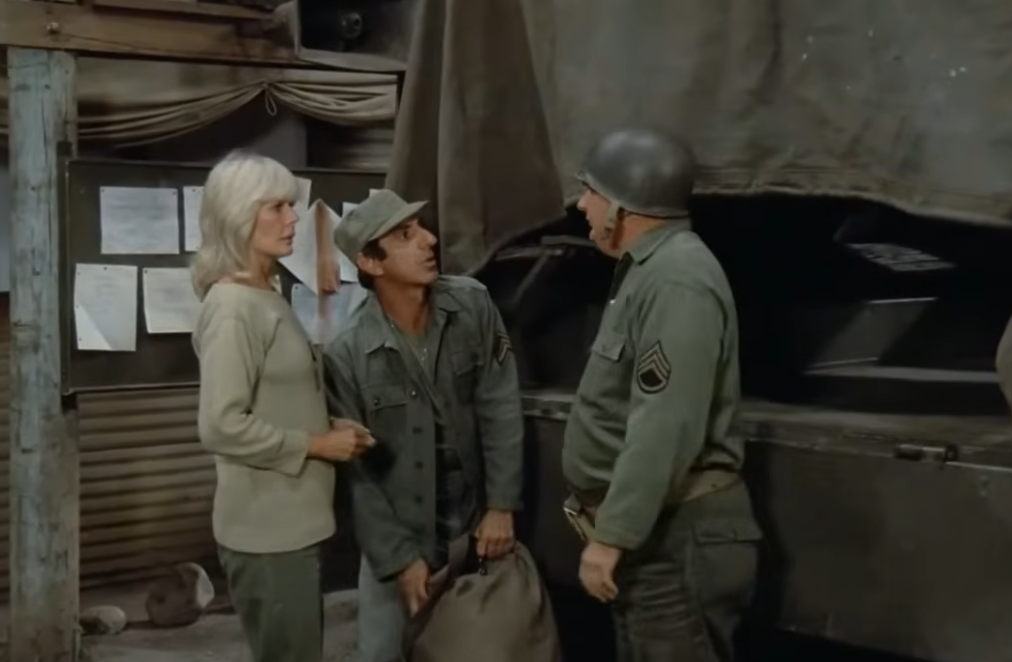 Twentieth Century, M*A*S*H (1972-1983)
Twentieth Century, M*A*S*H (1972-1983)
Season 2 Soared
M*A*S*H made an astounding recovery in its second season. It went from ranking 46 after the end of its first season to jumping into the top 10 for its second season. Although it would move broadcast days for its later seasons, it never placed lower than the top 20 in ratings.
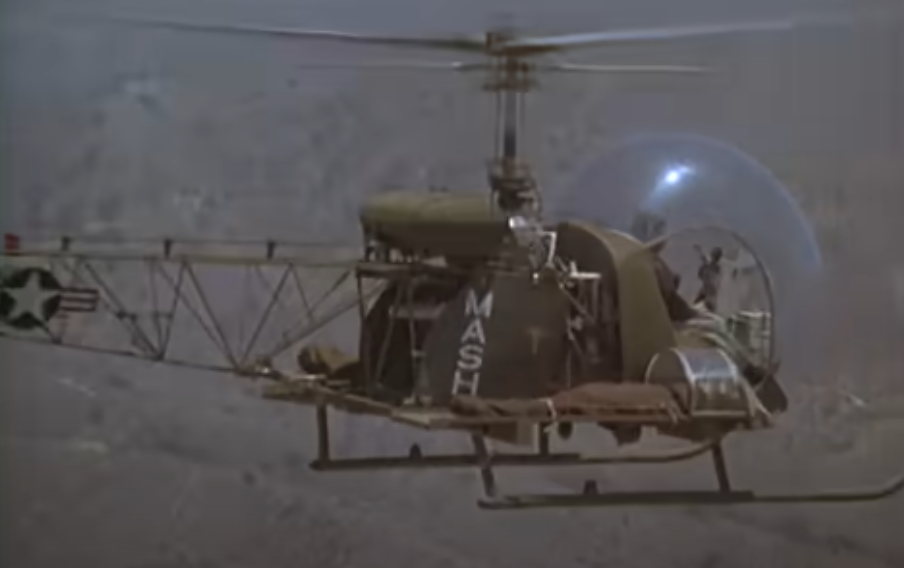 Twentieth Century, M*A*S*H (1972-1983)
Twentieth Century, M*A*S*H (1972-1983)
Klinger Found A Way To “Kling” On
Originally, Jamie Farr’s character of Maxwell Q Klinger (known as Klinger) was only supposed to appear in a single episode. However, he proved to be a crowd favorite and continued to stay on. That wasn’t all that changed about Klinger.
The Origins Of Klinger
Klinger became famous for his antics of “cross-dressing” to try to get discharged from Korea. It is rumored that Klinger was originally supposed to be gay, but they decided to change his character to what he became: a straight man pretending. It was also rumored to be based on real life.
 CBS Network Television, Wikimedia Commons
CBS Network Television, Wikimedia Commons
The Origins Of Klinger
The story goes that the backstory for Klinger was sourced from comedian Lenny Bruce. Bruce claimed that he was discharged from the Navy for expressing “homosexual tendencies”. It certainly bears a resemblance to Klinger’s tale.
 CBS Television, Wikimedia Commons
CBS Television, Wikimedia Commons
Dr Hornburger
The novel that both the film and the series were based on was written by Dr Richard Hornberger under a penname. Essentially, they were based on his own experiences in Korea—and he had strong opinions about both adaptations.
 Twentieth Century, M*A*S*H (1972-1983)
Twentieth Century, M*A*S*H (1972-1983)
Dr Hornburger
Hornburger enjoyed the movie. However, he did not like the television show. Hornburger identified as a conservative, and he felt that Alan Alda’s portrayal of Hawkeye gave the character a tendency towards liberal views he did not like. Alda had a different opinion of the character.
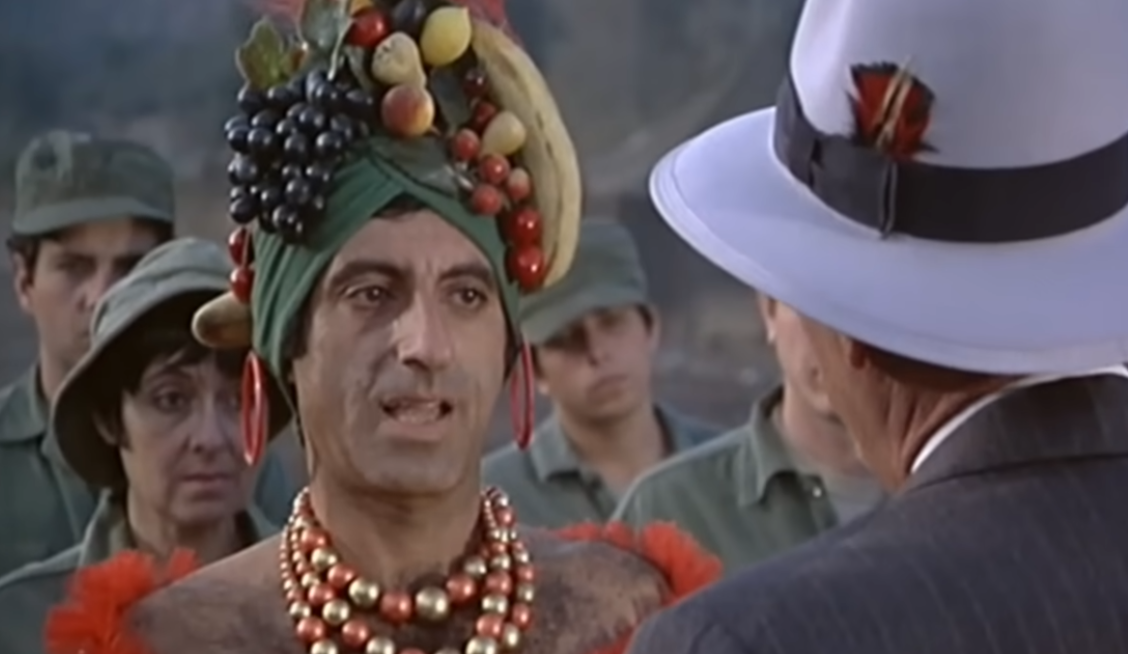 Twentieth Century, M*A*S*H (1972-1983)
Twentieth Century, M*A*S*H (1972-1983)
Alan Alda Saw Hawkeye As Conservative
Many people have stated that Hawkeye came across as “liberal” in nature. However, Alda never saw the character as a “true liberal”. He felt that Hawkeye, in many of his beliefs, was still a traditional conservative.
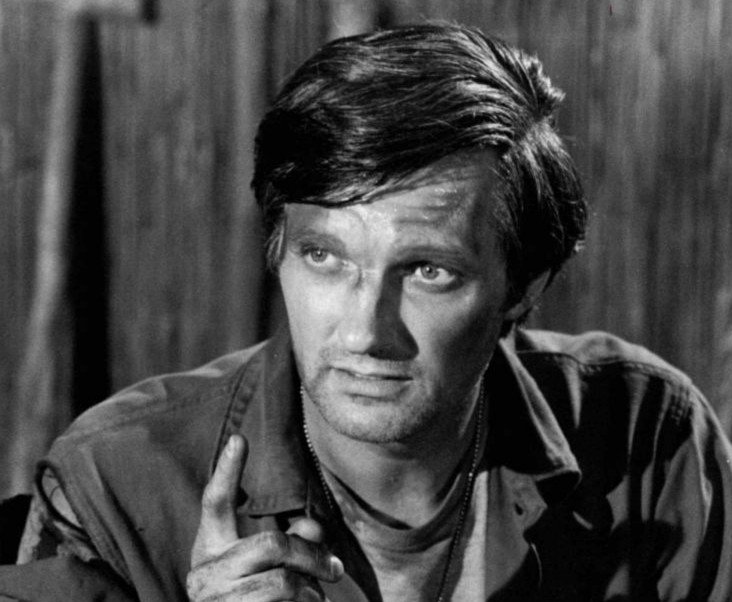 CBS Television, Wikimedia Commons
CBS Television, Wikimedia Commons
No One Wanted The Laugh Track
If you watch M*A*S*H, particularly in the early seasons, you will hear the very familiar “laugh track” that so many of the shows from that period had. The show's creator, Larry Gelbart, and the executive producer, Gene Reynolds, didn’t want it. CBS wouldn’t budge.
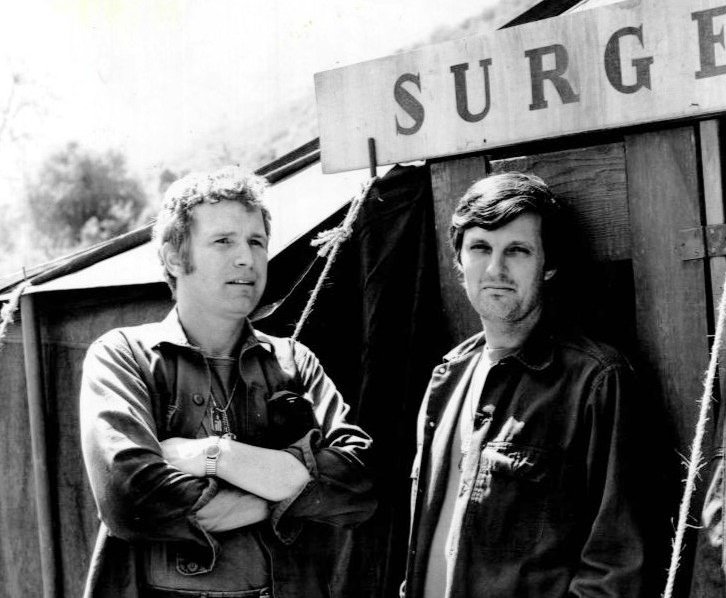 CBS Television, Wikimedia Commons
CBS Television, Wikimedia Commons
No One Wanted The Laugh Track
The problem was that CBS didn’t know how to produce a “comedy” that didn’t have a laugh track. As the season goes on, viewers will notice that it gets dimmer and dimmer. If you watched M*A*S*H in the UK you were spared entirely as BBC chose to leave it out.
 CBS Television, Wikimedia Commons
CBS Television, Wikimedia Commons
A Child Wrote The Theme Song
The theme for M*A*S*H was originally written for the 1970 movie. It is credited to Johnny Mandel and Michael Altman—the film director’s 15-year-old son. They had a goal that only Altman’s son could reach.
 CBS Television, Wikimedia Commons
CBS Television, Wikimedia Commons
A Child Wrote The Theme Song
They wanted the song to be “the stupidest song ever written”. Mandel and Altman just couldn’t quite get what they were looking for. So, Altman had his son, Michael, take a run at the lyrics. The success that he made for the song is mind-blowing.
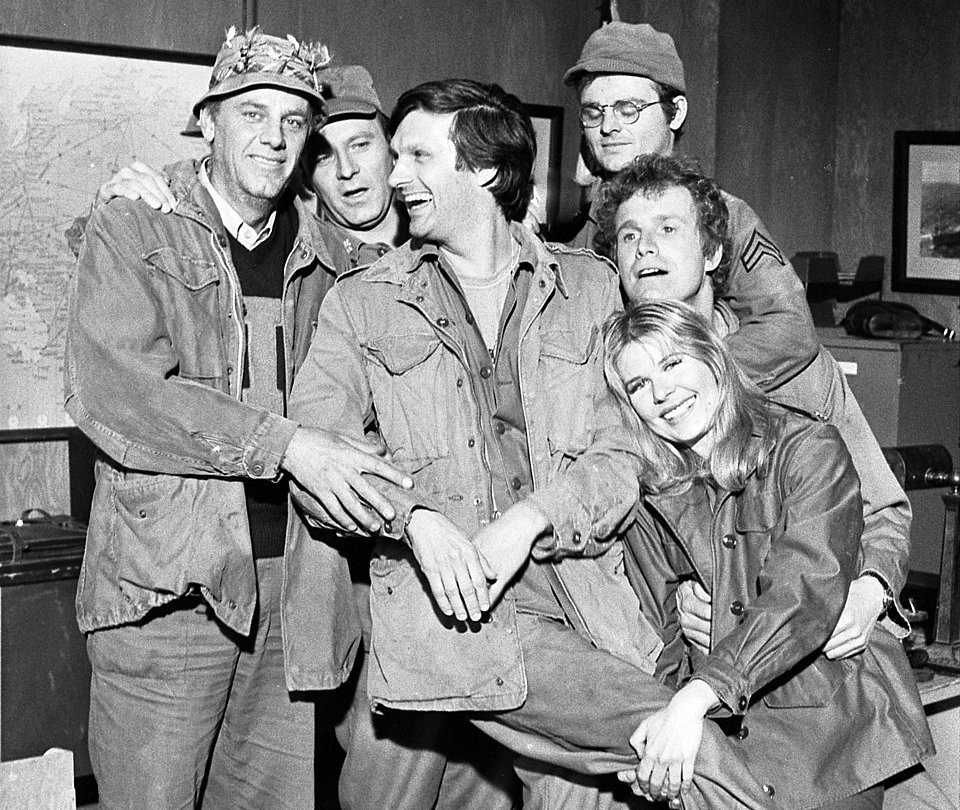 Harry Chase, CC BY 4.0, Wikimedia Commons
Harry Chase, CC BY 4.0, Wikimedia Commons
A Child Wrote The Theme Song
Supposedly Altman earned $70,000 for directing the movie. According to him, his son made more than $1 million just for writing that song. Not bad for 15 years old.
 CBS Television, Wikimedia Commons
CBS Television, Wikimedia Commons
CBS Vetoed Some Ideas
Initially, they pitched a theme for an episode in which the men stood outside in the cold to make themselves sick enough to be sent home. The idea was reportedly a tactic used by men in Korea. However, CBS felt it was “unpatriotic” and refused to approve it.
 CBS Television, Wikimedia Commons
CBS Television, Wikimedia Commons
Who Appeared In The Most Episodes?
There are many great and memorable characters in M*A*S*H. However, there is only one character that appears in every single episode: Alan Alda’s Hawkeye Pierce.
 CBS Television, Wikimedia Commons
CBS Television, Wikimedia Commons
The Writers Didn’t Mess Around
In the early days, the cast members constantly had “notes” about their scripts. It didn’t last long. Twice, in response to notes, the writers changed the script so that the actors were forced to dress in heavy parkas despite it being nearly 100 degrees Fahrenheit on set. The notes stopped after that.
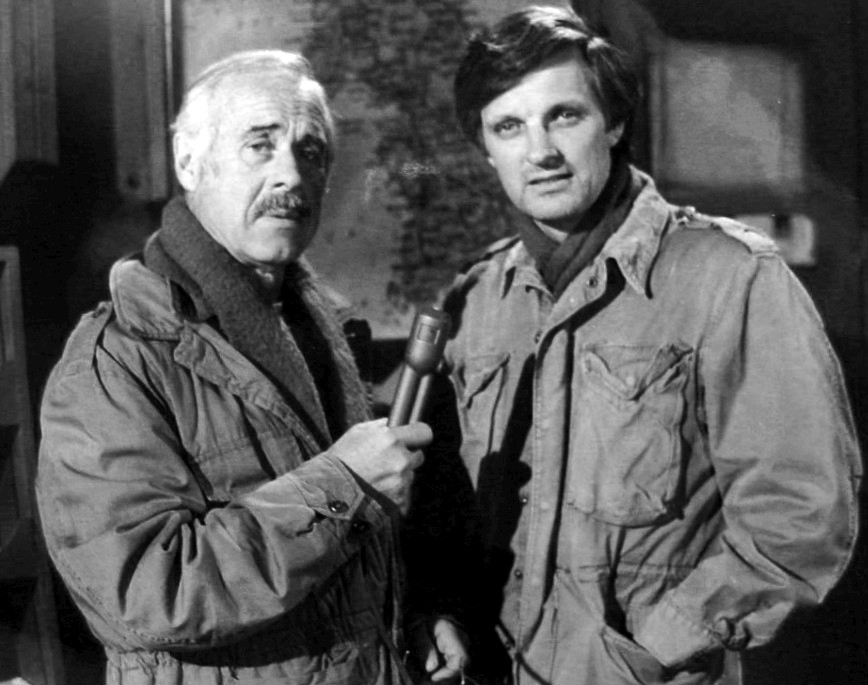 CBS Television, Wikimedia Commons
CBS Television, Wikimedia Commons
Wayne Rogers Walked Away
Despite being one of the central characters, Wayne Rogers left M*A*S*H after the end of the third season. He felt that his character, Trapper John, was constantly overshadowed by Hawkeye, and he was tired of it. Though, how was he able to walk away when he had a contract?
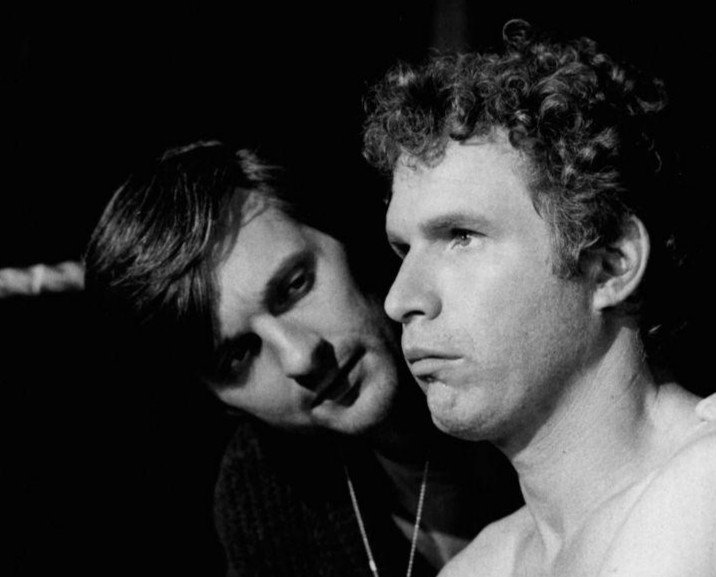 CBS Television, Wikimedia Commons
CBS Television, Wikimedia Commons
Wayne Rogers Never Signed
The truth was that Rogers never signed the contract that they had given him. Therefore, when he chose to leave, there was no contract for him to breach. He claims he never regretted his choice to leave. He only missed the friendships he’d made with the cast.
 NBC Television, Wikimedia Commons
NBC Television, Wikimedia Commons
Who Knew About Henry Blake?
There was another big cast change at the end of season three. McLean Stevenson, who played Lt Col. Henry Blake, also wanted to depart from the show after the third season wrapped. The writers saw an opportunity with this change and took it.
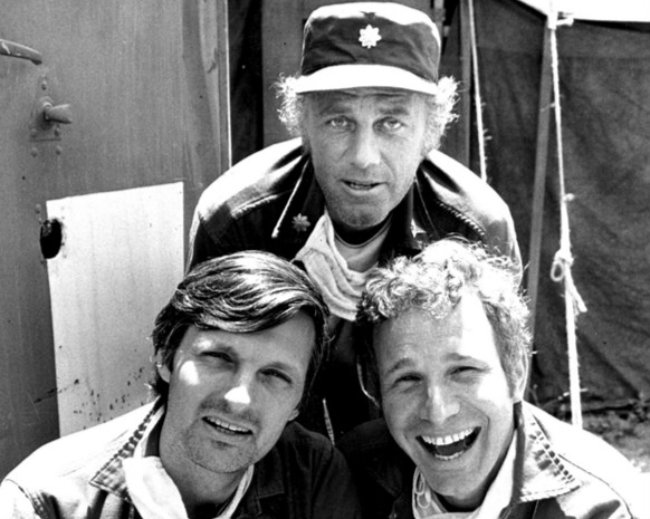 CBS Television, Wikimedia Commons
CBS Television, Wikimedia Commons
Who Knew About Henry Blake?
If you haven’t watched M*A*S*H, there are spoilers ahead. It has been 40 years after all. Instead of simply having Blake leave the show, the writers saw this as an opportunity to truly highlight the “wastefulness” of conflict. They decided to write Blake off in a very final way.
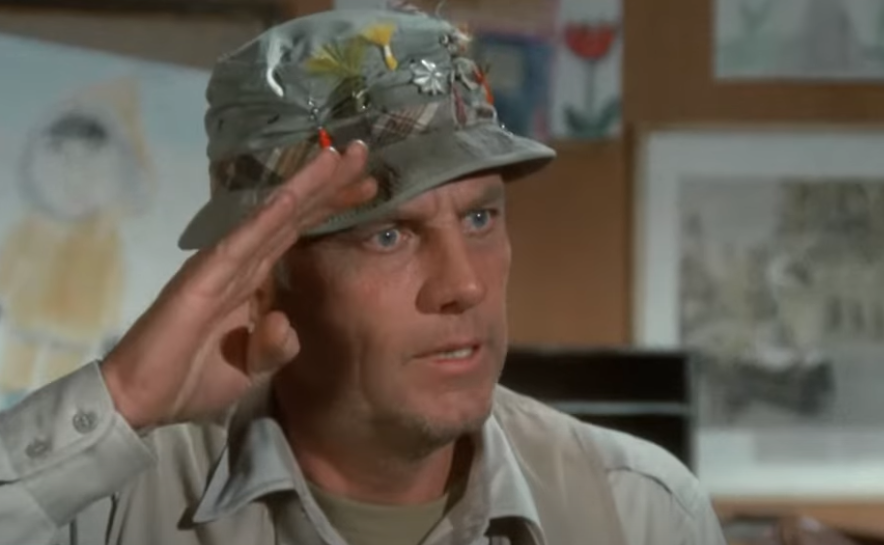 Twentieth Century, M*A*S*H (1972-1983)
Twentieth Century, M*A*S*H (1972-1983)
Who Knew About Henry Blake?
The answer to our question is almost nobody. The writers gave the cast the script for Blake’s last episode, “Abyssinia, Henry”, without the last page. They handed out the page, in which Blake’s passing was announced, moments before filming. But there was one person who wasn’t surprised.
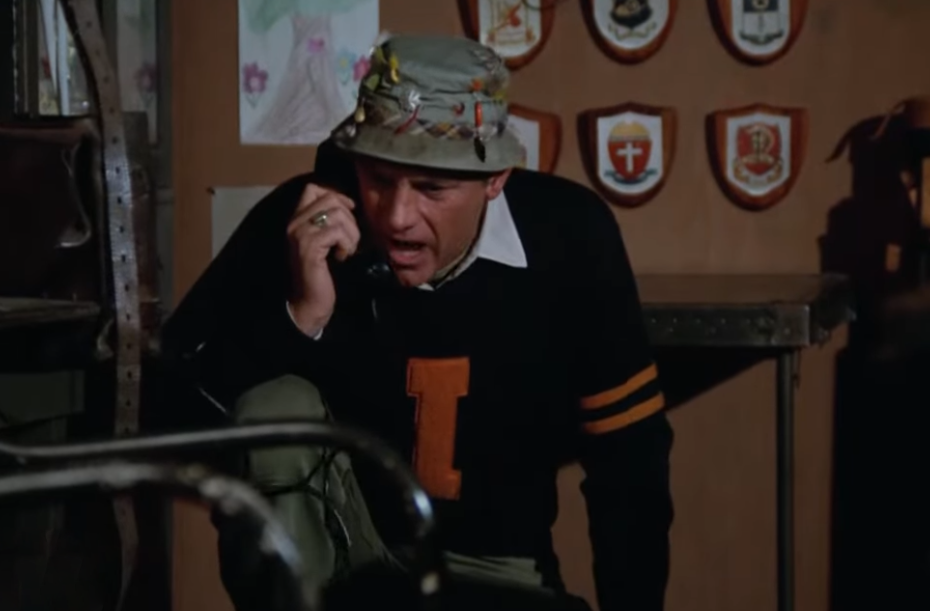 Twentieth Century, M*A*S*H (1972-1983)
Twentieth Century, M*A*S*H (1972-1983)
Who Knew About Henry Blake?
The cast lost their minds when the ending of the episode was revealed to them. One cast member, however, supposedly knew the truth before this moment. It is reported that Alan Alda was told of Blake’s fate ahead of time.
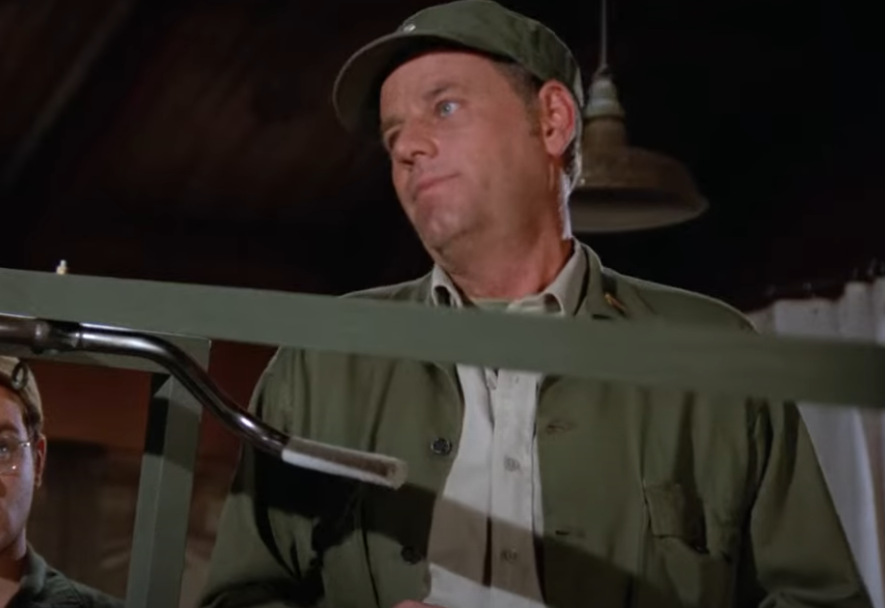 Twentieth Century, M*A*S*H (1972-1983)
Twentieth Century, M*A*S*H (1972-1983)
They Had Amazing Writers
As the story of “Abyssinia, Henry” suggests, M*A*S*H had some of the best writers around. In 2013, The Writers Guild ranked the show as the fifth best-written TV series of all time. It beat out crowd favorites like The Mary Tyler Moore Show, Cheers, and The Wire.
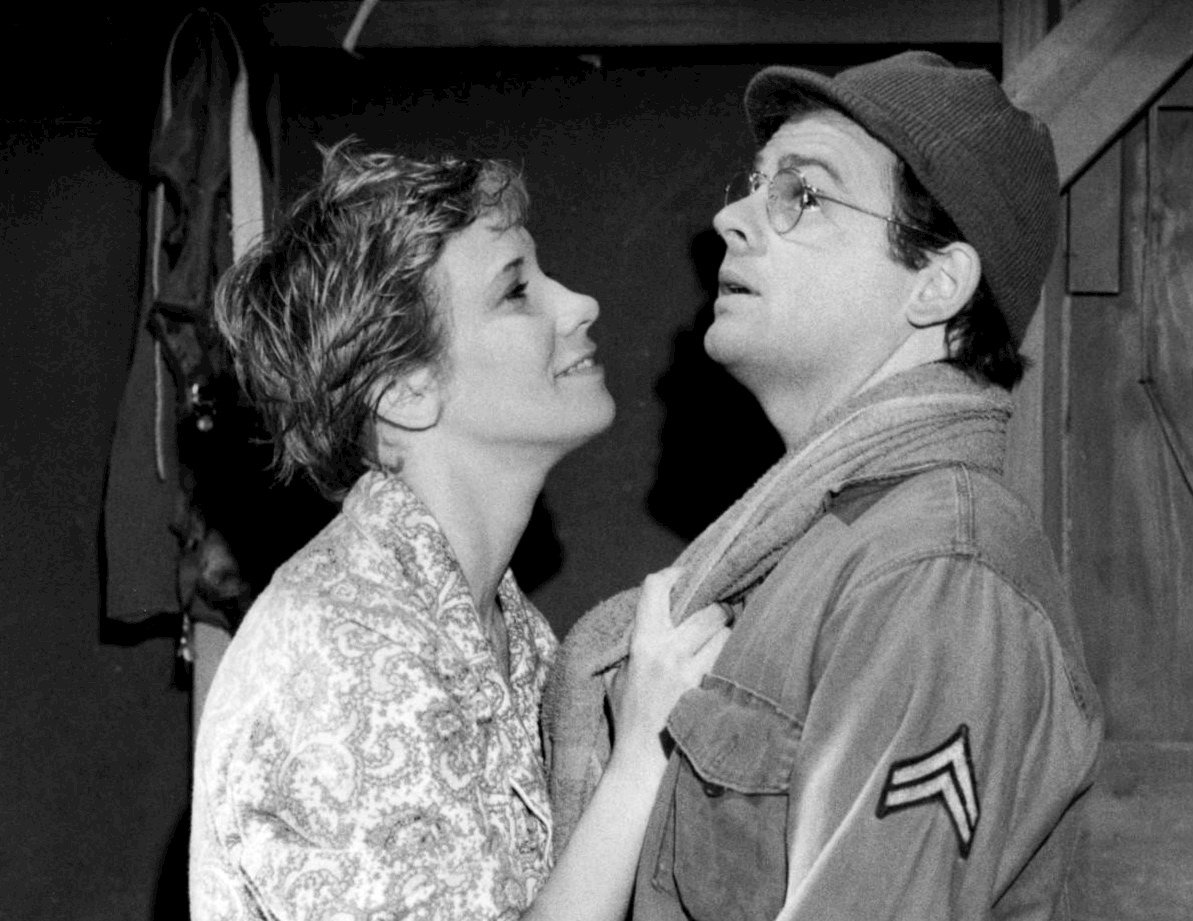 CBS Television, Wikimedia Commons
CBS Television, Wikimedia Commons
Named After Angels
The writers may have been the best of the best. However, after six seasons with a revolving door of side characters, they started running out of ideas. One episode that season featured four characters named after the infield of the Los Angeles Angels.
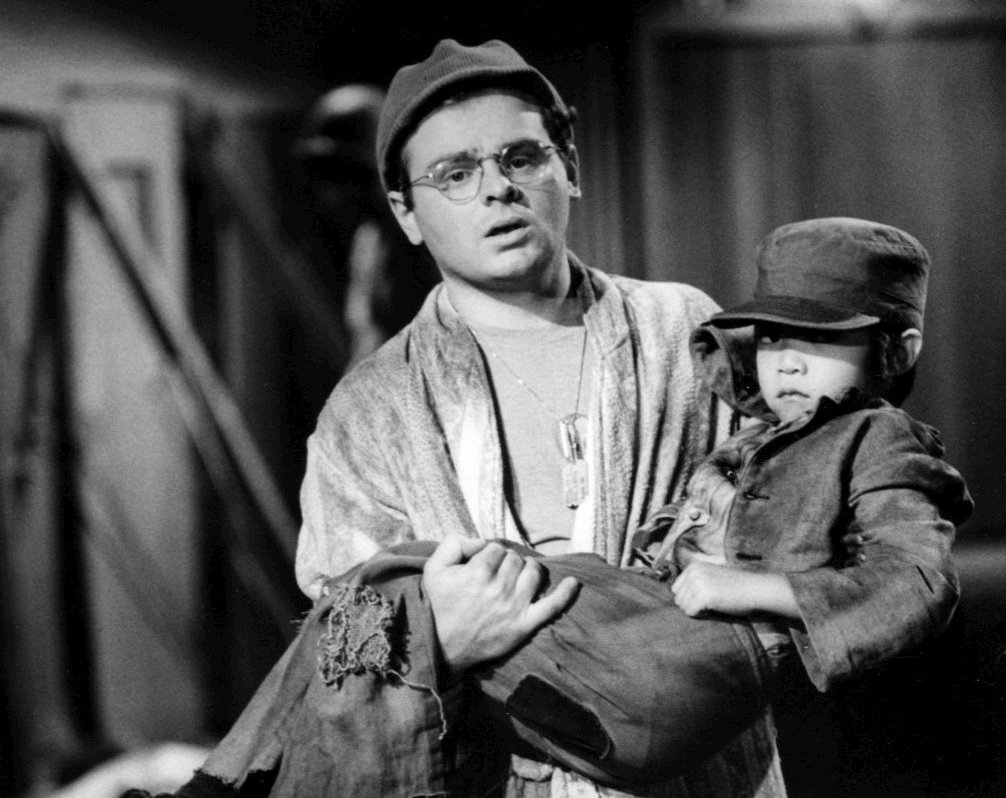 CBS Television, Wikimedia Commons
CBS Television, Wikimedia Commons
The Props Were Worth Big Money
The characters of M*A*S*H were all known for their quirks—it’s part of what made them all loveable. Radar had a teddy bear he slept with during the entire series. When that bear sold at auction in 2014, it sold for $14, 307.
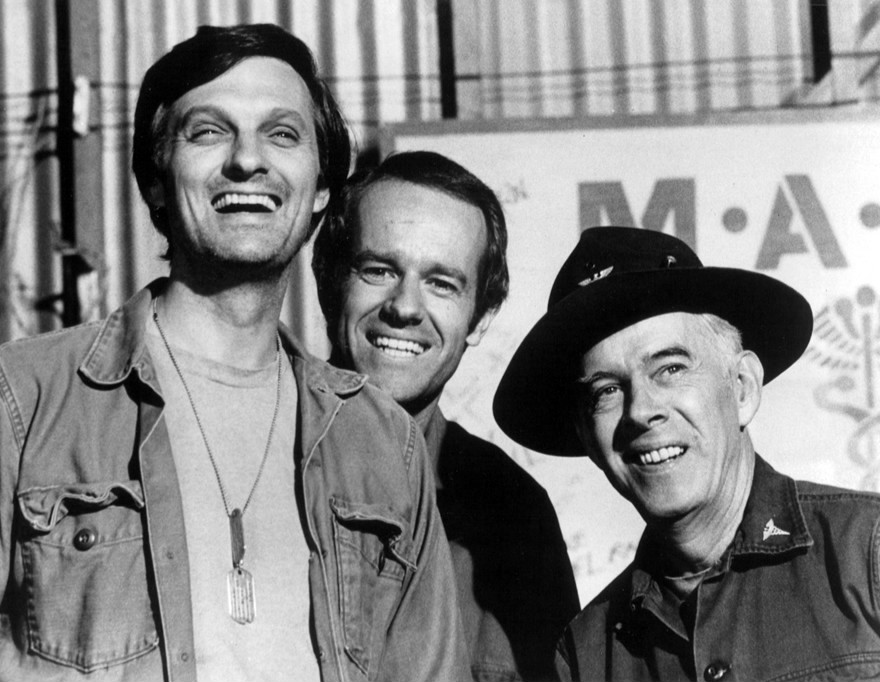 CBS Television, Wikimedia Commons
CBS Television, Wikimedia Commons
It Was Longer Than The Conflict
M*A*S*H was all about the Korean War. The Korean conflict lasted for three years, one month, and two days. M*A*S*H aired for 11 years.
 CBS Television, Wikimedia Commons
CBS Television, Wikimedia Commons
Alan Alda Does It All
Many fans will tell you that M*A*S*H would be nothing without Alan Alda. In some ways, they would be right. Not only was Alda an essential actor, but he also co-wrote 13 episodes and directed 31 episodes.
 CBS Television, Wikimedia Commons
CBS Television, Wikimedia Commons
Alda Also Breaks Records
Alan Alda was also recognized for his work both in front of the camera and behind it. He was the first person to ever win an Emmy for acting, directing, and writing on the same series.
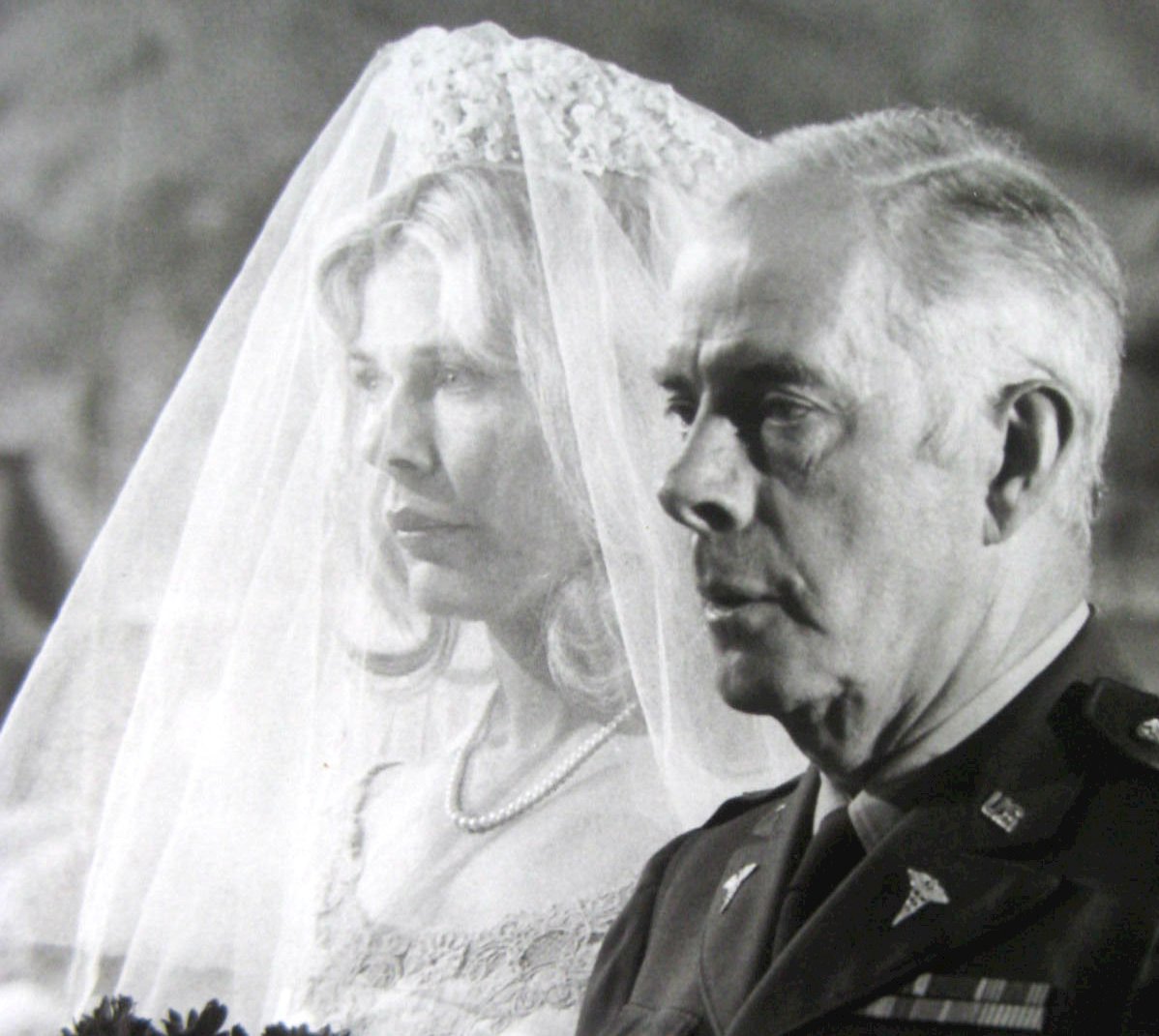 CBS Television, Wikimedia Commons
CBS Television, Wikimedia Commons
Who Wasn’t On M*A*S*H?
M*A*S*H had many guest stars who went on to make a name for themselves. This list includes Ron Howard, Leslie Nielsen, Patrick Swayze, John Ritter, Laurence Fishburne, Pat Morita, Rita Wilson, and Teri Garr.
 ABC Television. Wikimedia Commons
ABC Television. Wikimedia Commons
The Series Finale
M*A*S*H ended on February 28, 1983, in its final episode, “Goodbye, Farewell and Amen”. It was a two-and-a-half-hour special, and it was said that 77% of the American television viewers that night were watching M*A*S*H.
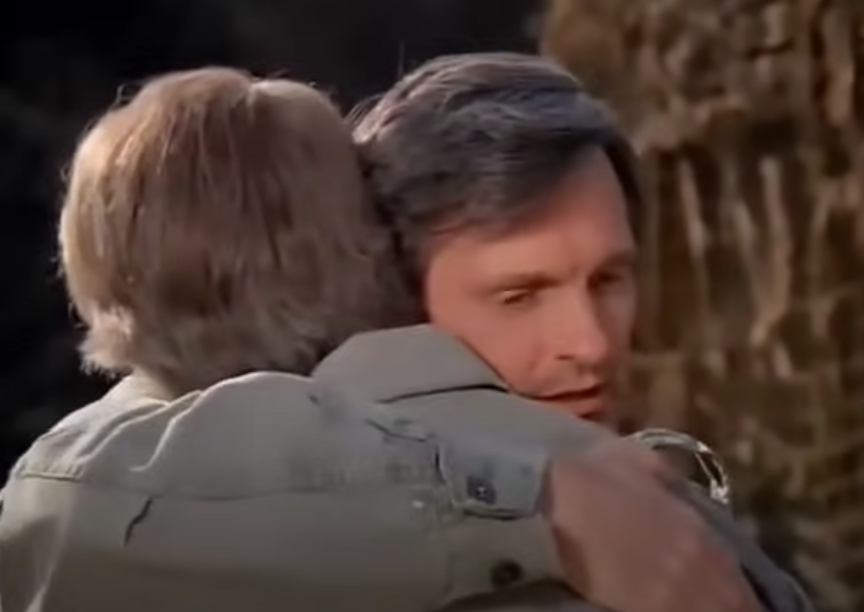 Twentieth Century, M*A*S*H (1972-1983)
Twentieth Century, M*A*S*H (1972-1983)
The Series Finale
When you break that down into numbers, 121.6 million people watched the finale when it aired. It was the most-watched broadcast in American history at the time. It wasn’t passed until 2010, as more people tuned into Super Bowl XLIV.
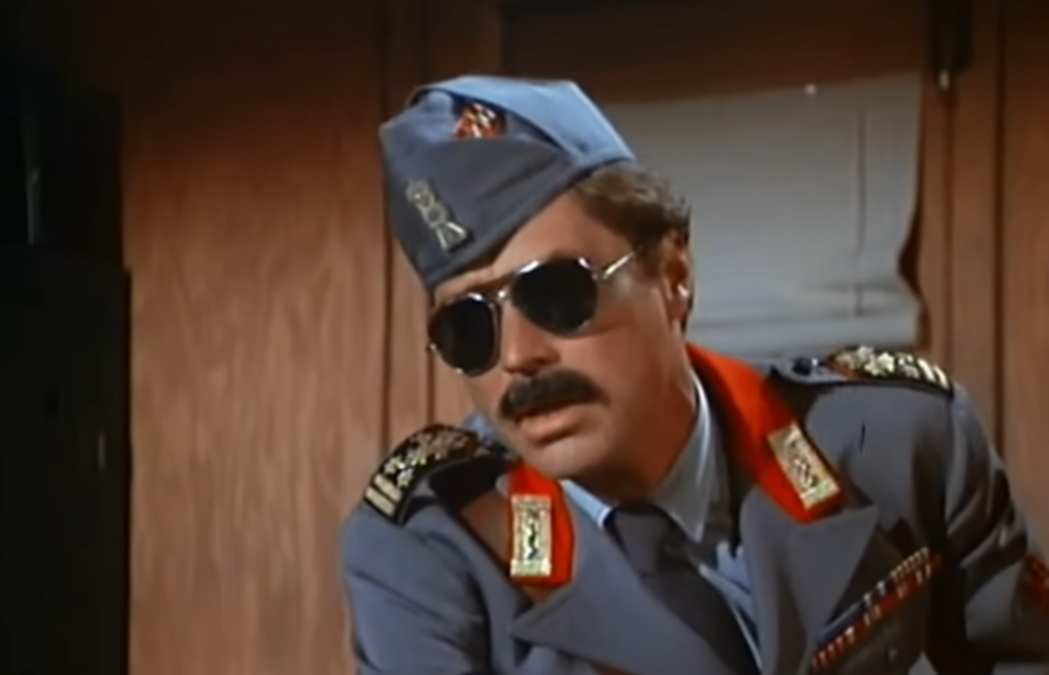 Twentieth Century, M*A*S*H (1972-1983)
Twentieth Century, M*A*S*H (1972-1983)
The Spin-Offs
They attempted to make several spin-offs from M*A*S*H. However, none of them could capture the magic of the original show. They were all short-lived and promptly forgotten.
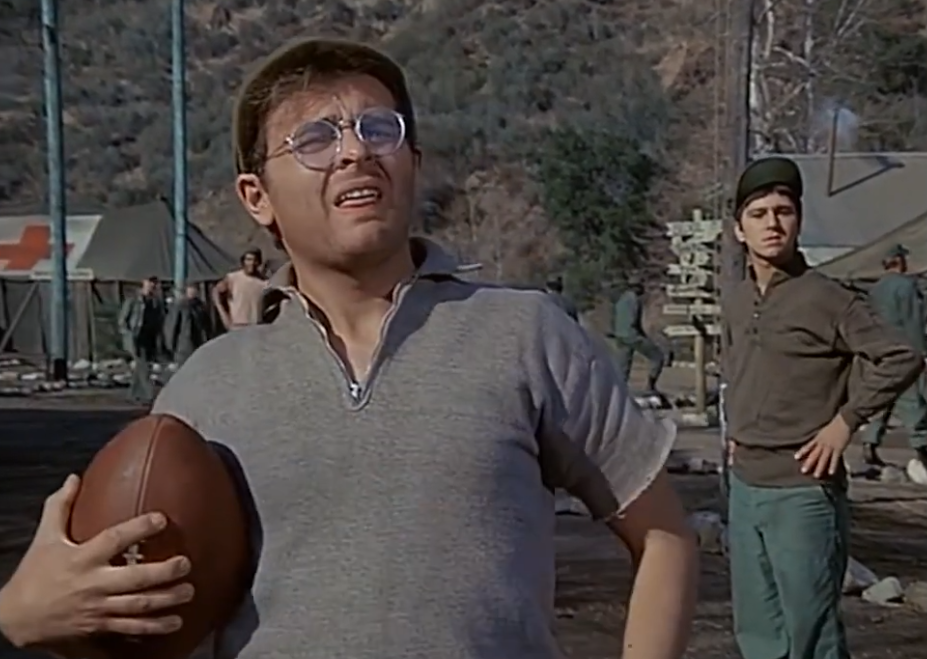 Twentieth Century, W*A*L*T*E*R (1984)
Twentieth Century, W*A*L*T*E*R (1984)
They Made A Time Capsule
The characters of M*A*S*H buried a time capsule in their second to last episode, “As Time Goes By”. This time capsule was buried on set and left in the ground to be found. The hunt was short-lived.
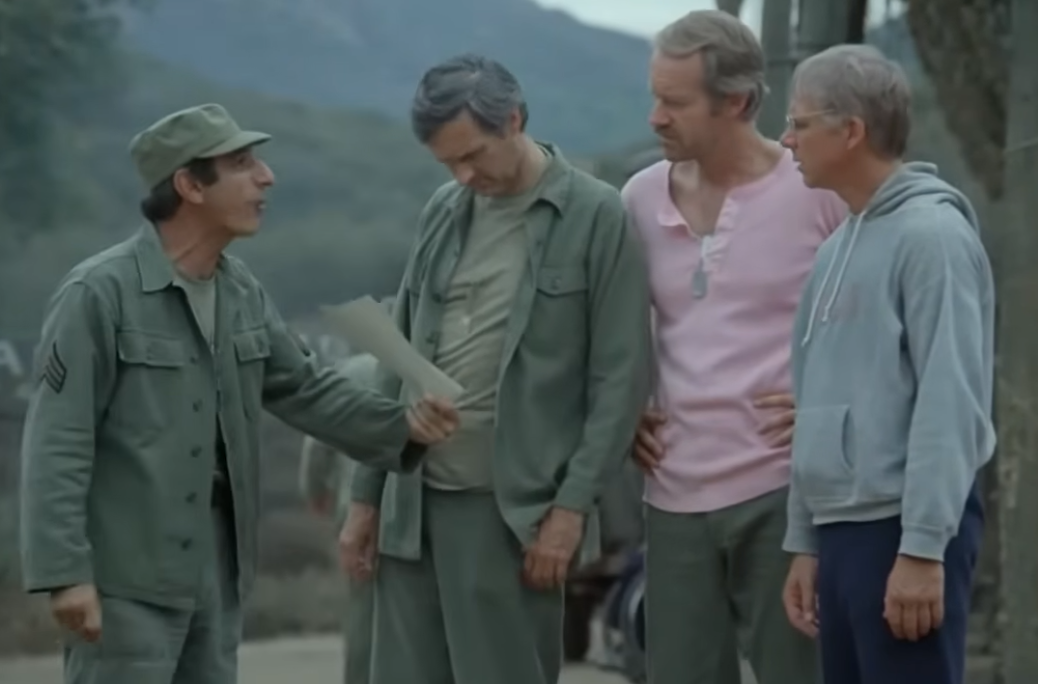 Twentieth Century, M*A*S*H (1972-1983)
Twentieth Century, M*A*S*H (1972-1983)
They Made A Time Capsule
The land was sold two months after filming ended. Not long after, construction started on the property and the workers dug up the time capsule. Alan Alda told them to keep it; supposedly the workers weren’t that impressed.
You May Also Like:
The Best Movies About Forgotten Wars
The Greatest Vietnam War Movies Of All Time




